John Hurrell – 29 February, 2012
For this show Smith exhilarates in the trope of art viewer clambering up mineral walls and crunching their way over mounds of flaked rock fragments like some nineteenth century explorer, tunnelling through the labyrinthine innards of Snake Pit led by himself as guide abseiling up the edifice of contemporary art theory.
Auckland
Group exhibition
Running on Pebbles: through-lines with incidents and increments
Curated by Allan Smith
Exhibition design Michael Parr
17 February 2012 - 1 March 2012
In this exhibition of fifty-two works from thirty-seven artists Allan Smith uses the unusual architectural resources of Snake Pit gallery to present his first curated show for several years. Highly regarded for his work in the first Auckland Triennial, Bright Paradise, and for other projects such as A Very Peculiar Practice, The Crystal Chain Gang, and The Nervous System, Smith is a Senior Lecturer at Elam. As you’d expect, in Snake Pit the choice of works and their placement is very considered.
This is an exciting event, partly because Smith has ‘a good eye’, and also because he is a formidable essayist with an amazing knowledge of contemporary fiction and philosophy. Always complex he nevertheless is a joy to read, partly because he is forever discovering and excited by fascinating quotes from, (ostensibly) the most unlikely sources. He’s a compulsive list maker who enjoys stringing together lines of (always acknowledged) found texts.
On top of this, or under it, he also has a penchant for science, the geological and things Smithson. For this show he exhilarates in the trope of art viewer clambering up mineral walls and crunching their way over mounds of flaked rock fragments like some nineteenth century explorer, tunnelling through the labyrinthine innards of Snake Pit led by himself as guide (and the famous musical mountaineer Felix O’Connell) abseiling up the edifice of contemporary art theory.
His project is dominated by the venue which with its eight rooms (four on each floor) is used in a manner reminiscent of the early seventies, when places like PS1 in New York were set up as ‘alternative spaces’ to kick against the modernist ‘white cube’ - to draw out notions of site specificity (traces of history) from buildings that had no walls covered over with white paint.
While such historical investigations of site are not going on here, in Running on Pebbles the raw ambience and sense of decay is crucial overall to Smith’s project. The darkened remains of the Box nightclub are the key exhibiting zone and the higher, lighter, ‘cleaner’, much tidier areas upstairs a foil.
Geological processes are present in most of these works, or else replaced by connected parallel layerings. Paul Cullen’s inverted, eviscerated and skinned sofas are raised high on pulleys, held in place by cement-filled buckets. Paul Johns’ ambigous photo of a dandy kicking a Beehive box of matches indicates a potential chemical and political explosion, while Esther Leigh’s images of constructed landforms have been photographed and photocopied, the ink then transferred to sellotape stuck directly to the Snake Pit walls like stacked up strata.
Derrick Cherrie’s paintings and floor sculpture, like Johns’ photograph, are about the societal, the investment our larger community has in perpetuating romantic love and the heterosexual nuclear family. Ubiquitous cigarettes here are a sign of addiction, white for bridal purity yet phallic. On the other side of the room Eddie Clemens’ ember-edged wire-netting fences hint of the collapse of the protection of property, the subsidence of capitalism and private ownership, and connect to the nearby Richard Frater video with its dramatically dissolving wall immersed in a corroding solution. Ivan Mrsic’s video of his movement along a pebbly beach speaks to Mark Burrow’s film of a canoe going downstream towards a waterfall, and Scott Satherly’s fake coalface.
Although references to aggregate and non-mineral structural supports (like Roman Mitch’s wall struts) abound, it is not dryly scientific - there is much sly humour too. Jim Speers and Ivan Mrsic share an interest in percussive instruments combined with spiralling structures (also seen with James Cousins), and upstairs photographs by Layla Rudneva-McKay show mounds of shingle as a backdrop to a piece of velvet and a curtain held vertically by persons unseen. Next to these images in the corner runs a long concrete wall, again by persons unknown (no mention in the catalogue) but actually by the show’s co-designer, Michael Parr.
In the same room, two photographs by Kate Newby of fallen cyclists lying on the road play off against a strange angular wooden spinning wheel by Mei Cooper that seems to double as a device for analysing and constructing perspectival space for painting. Such opposites combine to make up a conversation: entropy and energy loss contradicting creative drives and activation.
I’ve just provided some inroads into this complex amalgam. This show needs several visits - there is a lot to think about - and even though most of the work has been seen in Auckland before, the new juxtapositions, prodded by Smith’s unusual framework, open up fresh and exciting reinterpretations. An invigorating occasion.
John Hurrell
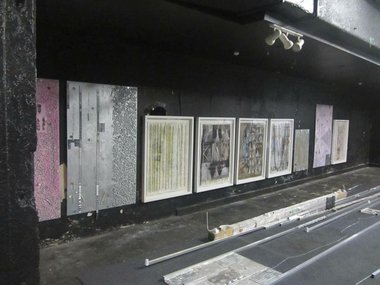

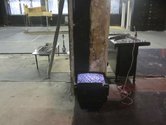
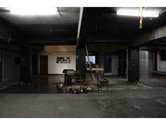


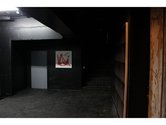
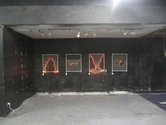
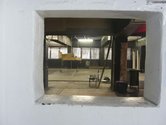
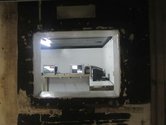
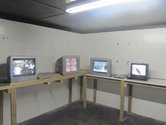
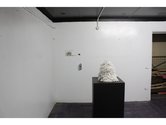
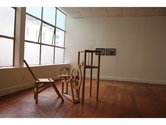
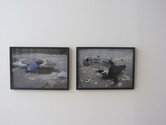
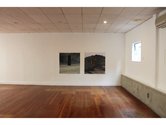
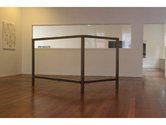
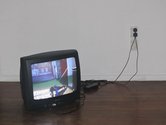
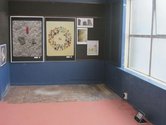
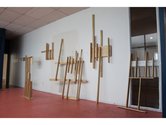
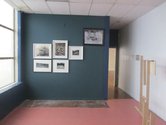
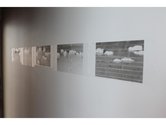
 Two Rooms presents a program of residencies and projects
Two Rooms presents a program of residencies and projects Advertising in this column
Advertising in this column



This Discussion has 0 comments.
Comment
Participate
Register to Participate.
Sign in
Sign in to an existing account.